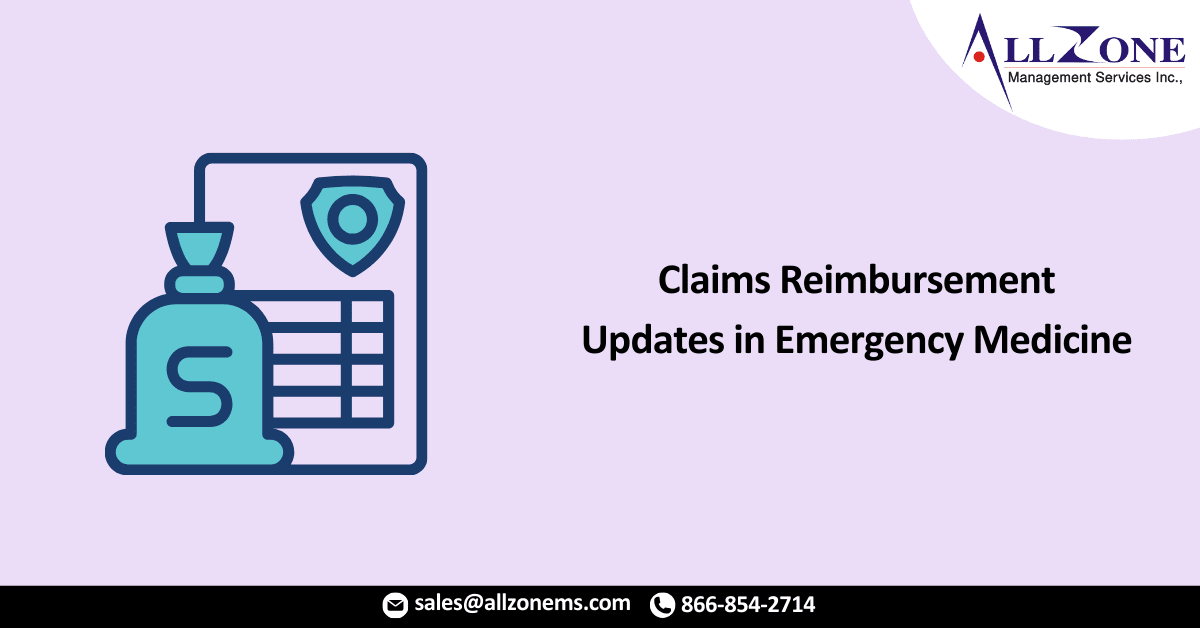Emergency medicine is facing a host of claims reimbursement updates this year, from looming Medicare payment cuts to new rules about the split and critical care visits.
Emergency department providers are still reeling from the effects of the ongoing pandemic. But other important updates are also happening in the background—and they are likely to impact emergency providers in 2022.
Medicare Reimbursement Cuts
Physician reimbursement under Medicare was initially scheduled to take a big hit in 2022. The total reduction was expected to be 9.75 percent, and it included:
Medicare Sequester: -2 percent
Since 2013, Medicare payments have been subject to a 2 percent annual reduction that was established by the Budget Control Act of 2011. But a temporary moratorium was put in place during the pandemic through the end of 2021.
“Pay-Go” Sequester: -4 percent
Further Medicare cuts were also scheduled to take place due to the Pay-As-You-Go (PAYGO) budget rule that requires spending increases be offset by either tax increases or cuts in other areas of mandatory spending. The $1.9 trillion allocated for the American Rescue Plan Act would have triggered an additional 4 percent reduction in Medicare.
Medicare Conversion Factor: -3.75 percent
In 2021, Medicare adjusted the Physician Fee Schedule conversion factor downward by more than 10 percent. However, thanks to the work of many advocacy groups, Congress added a one-year increase of 3.75 percent. This one-year increase was set to expire at the end of 2021.
But, with last-minute Congressional action, a one-year Medicare fix was approved. The fix resulted in a weighted average of -2 percent in 2022 (instead of -9.75 percent). The cuts are tiered by quarter and will range from 0.75 percent to 2.75percent. But the overall reduction is expected to be -2 percent for the year.
“For some emergency physician groups, Medicare payments can be a significant portion of their total reimbursement. However, this relief is only temporary. So, we’ll have to continue this work with Congressional leaders in order to find a long-term solution.”
Split/Shared Visits in the Emergency Department
Emergency physicians should also be aware of requirement changes for split and shared Visits. A split/shared visit occurs when both a physician and non-physician (i.e., physician assistant or nurse practitioner) are engaged in treating the same patient. Starting in 2022, the performance and documentation standards will be different. The final rule for the Medicare Physician Fee Schedule in 2020 notes:
“The substantive portion will be defined as one of the three key components of (history, exam, or MDM), or more than half of the total time spent by the physician and NPP performing the split visit….We are also clarifying that when one of the three components is used as the substantive portion in 2022, the practitioner who bills the visit must perform that component in its entirety in order to bill.”
“This speaks to a slightly different performance standard than the past,” explains Adler. “Practically speaking, if you see a patient with a non-physician provider, you will need to perform either a history and/or exam, and/or MDM to extent that you would in the absence of the non-physician provider. This updated rule clarifies the extent of the physician’s involvement.”
Critical Care Visits in the Emergency Department
In 2022, physicians can also share their critical care time with a non-physician provider, with billing credit going to the provider who performed the substantive portion of the visit. This is defined as the person who performed more than half of the total time. The rule states:
“When critical care services are furnished as a split (or shared) visit, we proposed to define the substantive portion as more than half the cumulative total time in qualifying activities that are included in CPT codes 99291 and 99292.”
“Historically, either the non-physician provider or the physician would have to satisfy the minimum threshold of 30 minutes for the code to be applied,” says Adler. “But under this new guidance, the critical care code is now in play if the non-physician and physician time hits the 30-minute threshold combined. Then, the clinician assignment is credited to whoever attests to the larger portion of time.”
Adler also points out another update in critical care. A critical care code may now be applied after an E&M code by the same physician/group for a single visit—as long as the critical care comes second and it is a separate event.
“This update is highly relevant to many practices, especially in the context of increased boarding times and prolonger emergency department stays,” explains Adler. “For example, if you are managing a stable patient with a fever and no admitting orders, and they decompensate later in the shift (become hypotensive, or required an upgrade in care) – then your note could include a critical care attestation.”
For More Information: 2022 claims reimbursement updates in emergency medicine

